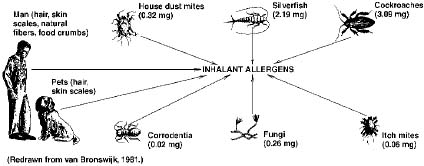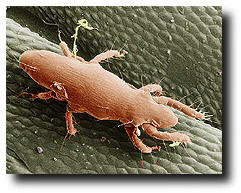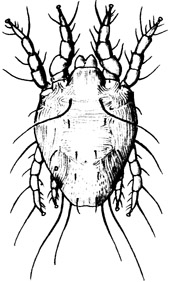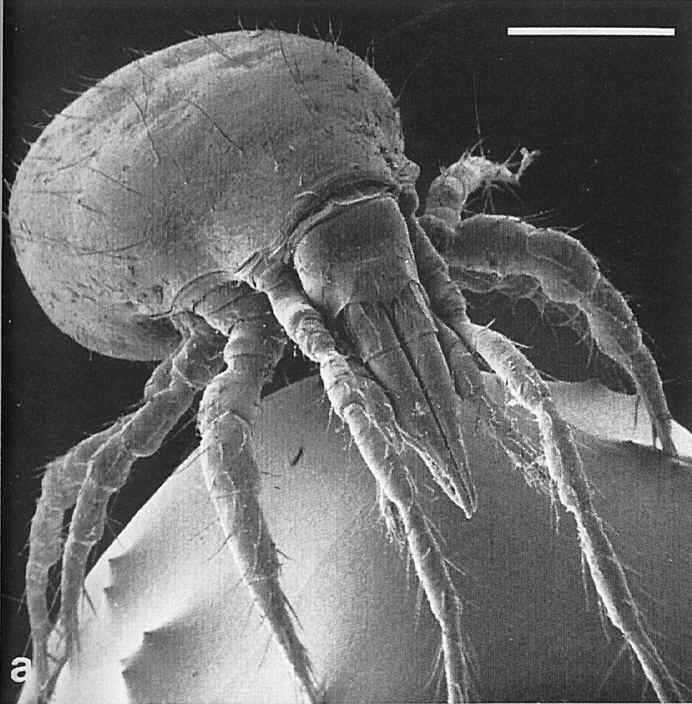OUR PROCESS


John Mattioli says being an entrepreneur has far exceeded his expectations. 




Archives
- August 2018
- October 2017
- September 2017
- June 2017
- February 2017
- July 2016
- June 2016
- May 2016
- March 2016
- February 2016
- January 2016
- November 2015
Categories
Dust Mites Birmingham
Here at Dry Clean City of Vestavia Hills, we post articles related to garment care and household goods that may be of interest to our customers. Today’s post is about dust mites.
What are dust mites?
 House dust mites are microscope bugs that primarily live on dead skin cells regularly shed from humans and their animal pets. Dust mites are generally harmless to most people. They don’t carry diseases, but they can cause allergic reactions in asthmatics and others who are allergic to their feces. People sometimes confuse dustmites with bed bugs. See this page about bed bugs and if you are going to a hotel or motel, check this page for tips specific to staying in hotels and motels.
House dust mites are microscope bugs that primarily live on dead skin cells regularly shed from humans and their animal pets. Dust mites are generally harmless to most people. They don’t carry diseases, but they can cause allergic reactions in asthmatics and others who are allergic to their feces. People sometimes confuse dustmites with bed bugs. See this page about bed bugs and if you are going to a hotel or motel, check this page for tips specific to staying in hotels and motels.
Skin cells and scales, commonly called dander, are often concentrated in lounging areas, mattresses, frequently used furniture and associated carpeted areas, often harbor large numbers of these microscopic mites. Since the average human sloughs off 1/3 ounce (10 grams) of dead skin a week. That gives dust mites a lot to eat. Cats and dogs create far more dander for dust mites to eat.
A typical mattress can contain tens of thousands of dust mites. Sick yet? Nearly 100,000 mites can live in one square yard of carpet. Ready to convince your spouse to start bathing regularly? Did you know a single dust mite produces about 20 waste droppings each day, each containing a protein to which many people are allergic. Yuck! The proteins in that combination of feces and shed skin are what cause allergic reactions in humans. Depending on the person and exposure, reactions can range from itchy eyes to asthma attacks. And finally, unlike other types of mites, house dust mites are not parasites, since they only eat dead tissue. Gross, but true.
| Common Name | Scientific Name |
|---|---|
| North American House Dust Mite | Dermatophagoides farinae Hughes |
| European House Dust Mite | Dermatophagoides pteronyssinus (Trouessart) |
![]()
Where do they live?
 Beds are a prime habitat (where 1/3 of life occurs). A typical used mattress may have anywhere from 100,000 to 10 million mites inside. (Ten percent of the weight of a two year old pillow can be composed of dead mites and their droppings.) Mites prefer warm, moist surroundings such as the inside of a mattress when someone is on it. A favorite food is dander (both human and animal skin flakes). Humans shed about 1/5 ounce of dander (dead skin) each week. About 80 percent of the material seen floating in a sunbeam is actually skin flakes. Also, bedroom carpeting and household upholstery support high mite populations.
Beds are a prime habitat (where 1/3 of life occurs). A typical used mattress may have anywhere from 100,000 to 10 million mites inside. (Ten percent of the weight of a two year old pillow can be composed of dead mites and their droppings.) Mites prefer warm, moist surroundings such as the inside of a mattress when someone is on it. A favorite food is dander (both human and animal skin flakes). Humans shed about 1/5 ounce of dander (dead skin) each week. About 80 percent of the material seen floating in a sunbeam is actually skin flakes. Also, bedroom carpeting and household upholstery support high mite populations.
The University of Manchester performed a 2005 medical study of pillows that found up to 16 species of fungi in a single pillow. They tested feather and synthetic pillows in a range of ages, finding thousands of spores of fungus per gram of pillow ; more than is found on an average used toothbrush.
![]()
Are they harmful? What do they do?
For most people, while they are disgusting, house dust mites are not actually harmful. However, the medical significance of house dust mites arises because their microscopic cast skins and feces are a major constituent of house dust that induces allergic reactions in some individuals. There is a genetic predisposition to dust mite allergies, but like many allergies it can also develop over time.According to Darryl C. Zeldin, acting director of the National Institute of Environmental Health Services, in the Wall Street Journal (January 5, 2010, Page D2), 18% to 30% of Americans are allergic to dust mites’ waste products, and almost 50% of American homes have allergen levels that are high enough to cause sensitivity in people who were nt previously allergic to dustmites. In other words, high levels of dust mites and their wastes, can cause previously non-allergic people to develop an allergy. In addition to producing allergic reactions, dust mites can also cause nasal polyps growths within the nose (see this article at 24 Medica). The constituents of house dust are show in the following figure:
Organisms in household dust:

|
Constituents
of
House Dust*
|
ash, cigarette; ash, incinerator; combustion products; fiber, synthetic textile; fibers: wool, cotton, paper and silk; fingernail filings; food crumbs; glass particles; glue; graphite; hair, human and animal; insect fragments; oil soot; paint chips; plant parts; pollen; polymer foam particles; salt and sugar crystals; skin scales, humans; skin scales, pets; soil; spores, fungal; stone particles; tobacco; wood shavings *Drawn primarily from van Bronswijk, 1981. |
 For those individuals, inhaling the house dust allergen triggers rhinitis allergica or bronchial asthma. People with allergies to house dust usually also have allergic reactions to house dust mite fecal material and cast skins. Studies have shown that the most potent house dust allergens can be extracted from the feces produced by dust mites. Other important allergen-producing organisms that are found in house dust are found in Figure 1. The rest of this fact sheet, based on Chapter 10, “Mites,” in Common-Sense Pest Control by Olkowski, Daar and Olkowski, will discuss biology of dust mites and will emphasize non-chemical control tactics. An allergist, a medical doctor specially trained to treat allergies, should be consulted for proper diagnosis and treatment of allergies.
For those individuals, inhaling the house dust allergen triggers rhinitis allergica or bronchial asthma. People with allergies to house dust usually also have allergic reactions to house dust mite fecal material and cast skins. Studies have shown that the most potent house dust allergens can be extracted from the feces produced by dust mites. Other important allergen-producing organisms that are found in house dust are found in Figure 1. The rest of this fact sheet, based on Chapter 10, “Mites,” in Common-Sense Pest Control by Olkowski, Daar and Olkowski, will discuss biology of dust mites and will emphasize non-chemical control tactics. An allergist, a medical doctor specially trained to treat allergies, should be consulted for proper diagnosis and treatment of allergies.
One of the most strongly allergenic materials found indoors is house dust, often heavily contaminated with the fecal pellets and cast skins of House Dust Mites. Estimates are that dust mites may be a factor in 50 to 80 percent of asthmatics, as well as in countless cases of eczema, hay fever and other allergic ailments. Common causes of allergy include house dust mites, cat dander, cockroach droppings and grass pollen. Symptoms are usually respiratory in nature (sneezing, itching, watery eyes, wheezing, etc.), usually NOT A RASH. However, there are reports of a red rash around the neck. Other allergic reactions may include headaches, fatigue and depression.
The wheeze-inducing proteins are digestive juices from the mite gut which are quite potent. An exposure to the mites in the first, crucial year of life can trigger a lifelong allergy. There is no cure, only prevention. One must control house dust mite levels.
Beds are a prime habitat (where 1/3 of life occurs). A typical used mattress may have anywhere from 100,000 to 10 million mites inside. (Ten percent of the weight of a two year old pillow can be composed of dead mites and their droppings.) Mites prefer warm, moist surroundings such as the inside of a mattress when someone is on it. A favorite food is dander (both human and animal skin flakes). Humans shed about 1/5 ounce of dander (dead skin) each week. About 80 percent of the material seen floating in a sunbeam is actually skin flakes. Also, bedroom carpeting and household upholstery support high mite populations.
![]()
How to Recognize the Symptoms of Allergies to Dust Mites
The protein substances in the dust mite feces produces antibodies in humans who are allergic when these are inhaled or touch the skin. These antibodies cause the release of histamines which causes to nasal congestion, swelling and irritation of the upper respiratory passages. The Mayo Clinic, WebMD and NIH collectively provide this list of typical symptoms of an allergy to dust mites; You may experience all or just some of them:
| Hay fever, | |
| Watering eyes, | |
| Runny nose, | |
| Sneezing, | |
| Asthma, difficulty in breathing, | |
| Infantile eczema | |
| Itchy, red or watery eyes | |
| Nasal congestion | |
| Itchy nose, roof of mouth or throat | |
| Postnasal drip | |
| Cough | |
| Facial pressure and pain | |
| Frequent awakening | |
| Swollen, blue-colored skin under your eyes | |
| In a child, frequent upward rubbing of the nose |
A doctor can use skin tests and blood tests to confirm a suspected dust mite allergy. In a news story in the New York Times (March 4, 2011) Dr. Diego Saporta, an otolaryngologist in Elizabeth, N.J., who specializes in allergy management., says to ask: Do I have persistent sniffles and sinus headaches? Do I often wake up with scratchy eyes? Do I sneeze repeatedly first thing in the morning? “Sometimes symptoms are obvious, but sometimes they are subtle,” said Dr. Saporta says. “Your only symptom might be chronic nasal congestion.”
What else makes the symptoms worse?
| Poor ventilation | |
| High humidity | |
| High temperatures (above 70 F / 20 C) | |
| Indoor air pollution such as tobacco smoke or car fumes. | |
|
Walking over a rug, sitting down in a chair, or shakings the bed clothes, makes the dried dust mite feces become airborne, making allergic person’s symptoms worse. |
![]()
Identification
 House dust mites, are too small to be visible to the naked eye; they are only 250 to 300 microns in length and have translucent bodies. It takes at least a 10X magnification to be able to correctly identify them. The adult mite’s cuticle (covering) has simple striations that can be seen from both the dorsal (top) view and from the ventral (bottom) view. The ventral view of the house dust mite reveals long setae (hairs) extending from the outer margins of the body and shorter setae on the rest of the body. Through the microscope, one will see many oval-shaped mites scuttling around and over one another. There are eight hairy legs, no eyes, no antennae, a mouthpart group in front of the body (resembles head) and a tough, translucent shell, giving a “fearsome appearance.”
House dust mites, are too small to be visible to the naked eye; they are only 250 to 300 microns in length and have translucent bodies. It takes at least a 10X magnification to be able to correctly identify them. The adult mite’s cuticle (covering) has simple striations that can be seen from both the dorsal (top) view and from the ventral (bottom) view. The ventral view of the house dust mite reveals long setae (hairs) extending from the outer margins of the body and shorter setae on the rest of the body. Through the microscope, one will see many oval-shaped mites scuttling around and over one another. There are eight hairy legs, no eyes, no antennae, a mouthpart group in front of the body (resembles head) and a tough, translucent shell, giving a “fearsome appearance.”
![]()
 Biology and Life Cycle
Biology and Life Cycle
Adult females lay up to 40 to 80 eggs singly or in small groups of three to five. After eggs hatch, a six-legged larva emerges. After the first molt, an eight-legged nymph appears. After two nymphal stages occur, an eight-legged adult emerges. The life cycle from egg to adult is about one month with the adult living an additional one to three months.
The diet is varied with the primary food source, consisting of dander (skin scales) from humans and animals. However, needed nutrients can be provided from fish food flakes, pet food, fungi, cereals, crumbs, etc. Many mite species live in bird’s nests, in barns, among stored grain, straw, etc.
House dust mites are cosmopolitan in distribution with much of the research previously done in Europe.
One of the major limiting factors in mite survival and population development is the availability of water for sorption. Highest mite densities occur in the humid summer months and lowest in drier winter periods. Dust mite populations are highest in humid regions and lowest in areas of high altitude and/or dry climates.
Due to the large quantity of skin scales sloughed off daily by humans, mites have an abundant food supply. Dust mite antigen levels are measured in bed dust, floor dust, and room air samples. Detection in room air was best during cleaning and bed-making activities.
![]()
Detection
House dust mite presence is often suspected before they are actually seen and accurately identified. Requests for control often come from individuals who have been diagnosed by medical personnel as allergic to the house dust mite or the allergens produced.
The presence of house dust mites can be confirmed microscopically which requires collecting samples from mattresses, couches or carpets. Also, it requires the use of a microscope with sufficient magnification and the technical ability to recognize house dust mites under the microscope. In general practice, testing is unnecessary. dustmites are extremely common in household environments. They virtually always show up in a test, so testing just adds expense. A better question than “are dust mites present?” is “How can I control or remove them?”
![]()
What Can You Do?
Control measures and Sanitation
A number of researchers, like those at the University of Nebraska, have studied dust mite control and have a set of recommendations that are proven to be effective. Recommendations focus on “dust control.” One must reduce the concentration of dust borne allergens in the living environment by controlling both allergen production and the dust which serves to transport it. For the bedroom environment you will want to use some or all of the following methods. We have listed them in order of practicality combined with effectiveness.:
- The most effective means is to enclose the mattress top and sides with a plastic cover or other dust mite impervious cover (available here, click on allergy bedding on the left in the new page), thoroughly vacuuming mattress pillows and the base of the bed. Put an airtight plastic or polyurethane cover over your mattress. This is the method recommended by Consumer Reports (see their article here). This tip is number one for a reason: it is in your bed (including the baby’s crib) that you are closest to the mites and their feces and enclosing the mattress and pillows in a dust mite cover virtually eliminates the mites here. There is a website, The Allergy Store, that we recommend that sells allergy controls, like the dustmite-proof fitted sheets. Mattresses covered with “fitted sheets” help prevent the accumulation of human skin scales on the surface. These sheets have the advantage of being waterproof, too, which helps protect your mattress from spills, babies and toddler’s waste, too.
- Wash your sheets, pillows and blankets in very hot water. Wash the sheets and blankets at least every two weeks. Wash your pillow every week or put a dust mite-proof cover (available here) on it and wash once per year. Your pillowcase goes over the dust mite cover. How hot is hot? The water used to wash your sheets and blankets should be at least 130°F (54°C). Set your washing machine to it’s hottest setting. If the water doesn’t seem to be coming out hot, you may want to check your hot water heater – you may not realize that most household hot water heaters have a knob that can adjust the temperature of the water it produces. For fabrics that may not be washed in hot water; just pop it into the freezer for 24 to 48 hours to kill dust mites.
And for those who travel and stay in hotels (or with less hygienic friends and family): Take a dust mite impervious cover (available here), along for when you stay at hotels – just think how disgusting their pillows must be! - Use Synthetic fabrics: Replace feather and down pillows with those having synthetic fillings. Replace woolen blankets with nylon or cotton cellulose ones. And don’t forget the children’s stuffed animals: be sure to get washable stuffed animals in the future! Memory foam mattress manufacturers claim that their mattresses create an environment that is unfavorable to dust mites. Even so, an encasement (dust mite impervious cover) is still advised, also because it can stop bedbugs (which are a rapidly growing problem)
- Reduce temperature and humidity: Dust mites love warm, humid conditions, above 70 F (21 C) and 50% or greater humidity.
Temperature: Keep the thermostat in the house below 70 degrees.
Humidity: Effective control of mites would require the maintenance of relative humidity’s below 50 percent. Here is a range of dehumidifiers from a large basement or ground floor model, to a small room model.
We are Easy on The Environment & On Your Wallet!
www.inthehamper.com



